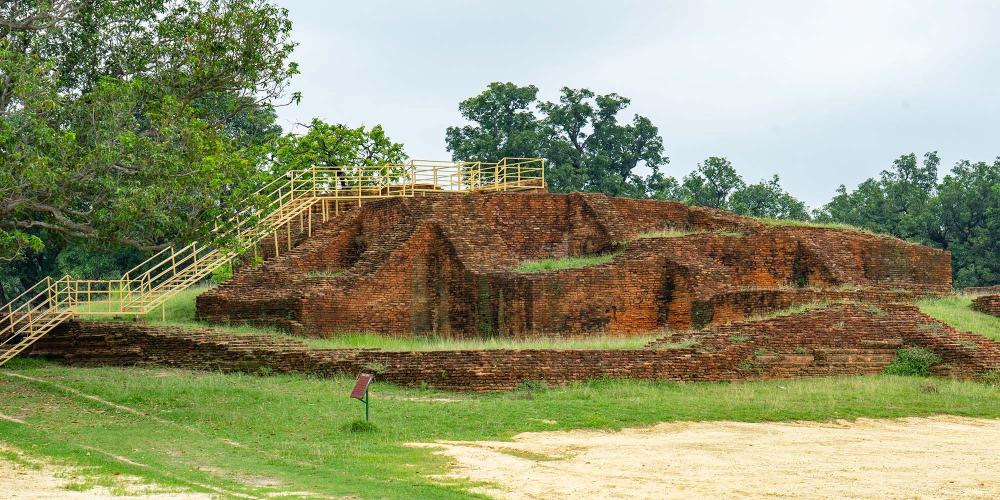

Lumbini, the renowned birthplace of Lord Buddha in Nepal, is steeped in religious significance and historical richness. Amidst its plethora of archaeological wonders, the Kudan Stupa, also known as Nigrodharma Park, stands as a site of immense historical value. This sacred structure has long been a focal point for pilgrims and tourists alike.
The history of tourism at the Kudan Stupa is intrinsically linked to the broader history of Lumbini itself. Although the exact date of the construction of Kudan Stupa remains uncertain, it is believed to have been built over 2,000 years ago. The site garnered more attention following the re-discovery of Lumbini as the Buddha's birthplace in 1896 by the archaeologist General Khadga Samsher Rana and the subsequent work by archaeologist Dr. Alois Anton Führer.
The Kudan Stupa, which lies approximately 4.5 kilometers south of the sacred garden in Lumbini, is a monumental stupa complex believed to be the historical site where Lord Buddha his father after his enlightenment. The site is identified by the presence of ancient ruins of stupas and monasteries representing the place where Buddha would have stayed with his followers. The stupa is an emblematic representation of the first sermon Buddha gave to his father's kingdom about the reality of suffering and the path to enlightenment.
Tourism at Kudan Stupa began to flourish significantly as the entire Lumbini region was designated a World Heritage Site by UNESCO in 1997. This recognition prompted the Nepalese government and international organizations to initiate various development projects aimed at preserving the site and enhancing its accessibility for visitors. With improved infrastructure, the flow of both pilgrims and cultural enthusiasts to Kudan Stupa increased markedly.
Recent trends in tourism at Kudan Stupa reflect a growing interest in spiritual and cultural tourism. Visitors from all over the world travel to this sacred location to immerse themselves in the serenity it offers and to understand more about the life of the Buddha. Mindfulness and meditation retreats have become popular, attracting those seeking spiritual solace and self-discovery. Also, eco-friendly tourism has gained momentum, with initiatives aimed at preserving the sanctity of the historical surroundings by minimizing any adverse environmental impacts.
The rise in tourism in Lumbini, including at the Kudan Stupa, has significantly contributed to the local and national economy. It has created employment opportunities, encouraging the development of hotels, restaurants, and other facilities catered towards tourists. Revenue generated from tourism helps fund restoration projects to maintain the historical sites within the region.
The Kudan Stupa of Lumbini, Nepal, is not just a testament to the region's profound historical roots but is also a beacon for those seeking to connect with Buddhist philosophy and practices. As part of the greater Lumbini area, this ancient stupa will continue to draw the interest of historians, archaeologists, religious seekers, and tourists for generations to come, making it a pillar of Nepal's thriving tourism landscape.